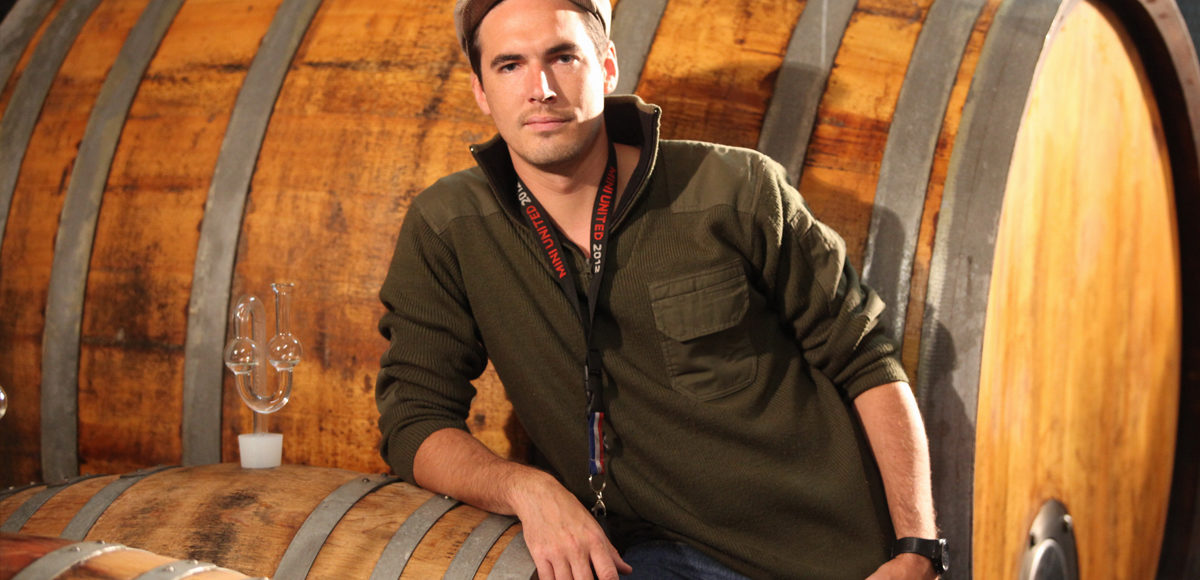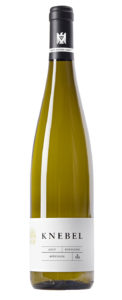“We want every vineyard, every site, each vintage, and even each cask to be allowed to show its own character and to observe its development. That means accepting what we have been given. In this way, we’re committed to the ideas of natural wine.” — Matthias Knebel
If you reach the Mosel Terraces by train, you’ll find your face involuntarily pressed to the window, staring in disbelief as you make the slow bend around the base of an impossibly sheer wall of slate and vines, rising almost from the track edge itself. This is where the Knebel family has been growing grapes since 1642. And over the centuries, it hasn’t gotten measurably easier to do so. Today, Matthias Knebel’s fidelity to painstaking, handwrought viticulture is yielding extraordinary results across his range, from a ridiculously undervalued village bottling to the magnificent GGs. The wines deliver the unadulterated intensity of these warm, slate-packed terraces, with an emphasis on texture, minerality, purity, and supreme finesse.
Region
The Mosel Terraces are distinctly warmer and even more formidable than the Middle Mosel just a few river bends away. Here the river valley narrows and the terraces climb, chiseled step-like into the slate and quartzite banks. The terraces make it possible for grapes to grow where it would otherwise be too sheer and stony to farm, while their form helps ensure the vines’ development by guiding their root systems into the slope. However, they are also quick-drying heat traps. This aspect was once a vital asset, but these days, they pose a danger of encouraging excessive ripeness. Ripeness can lead to the roundness and high alcohol levels that are anathema to Mosel riesling. Matthias and an influx of younger producers are countering this, in part with a serious commitment to sensitive farming wherever possible. It’s a movement that is transforming the region from almost moribund to kinetic right before our eyes. “Respect for a wine culture that has melded the slate, the steep slope, the river landscape, and the grape variety into a single entity in a centuries-long process,” says Matthias, and it is this philosophy that sets the Knebel wines apart.
Matthias Knebel
As a child, there was no doubt in Matthias’ mind that he would become a winegrower like his father, Rheinhard. But as a teenager, Matthias had second thoughts. He saw first hand just how grinding the work could be. Ultimately, he was convinced by the magic of wine itself and made the decision to follow family tradition. Rheinhard passed away unexpectedly in 2004, just as Matthias was to begin his studies at Germany’s top wine school, Geisenheim. These were sad, difficult times for his mother, Beate, for Matthias, and for everyone who had known Rheinhard. Being the strong woman that she is, Beate carried on in Rheinhard’s absence and took charge of the estate for the next four years. In 2008, Matthias returned from his studies and, together with interns and temporary staff, began carrying out Rheinhard’s legacy. By 2016, his work and vision had earned the estate VDP membership.
The total focus at Knebel is riesling. And the particular joy of the wines comes from Matthias’ feel for allowing the grape to translate the specific idioms of each of his parcels. Within these sites, every terrace has its own microterroir, influenced by a high variation in soil composition, exposition, and vine age. From Hamm come wines of herbal spiciness; Brückstück, concentration and elegance, Röttgen, fruity forcefulness, and Uhlen, succulent density. These sites are legendary among lovers of steep-slope riesling. From vintage to vintage, the wines have vaulted in complexity and finesse, resonance and vibrance as Matthias attunes himself to the character of each parcel and the demands of farming these sites in a warming world.
Vineyards and farming
Blessed with a collection of old vines, some un-grafted, Matthias relies on fewer canes, natural competition, lower yields, and rigorous selection. In 2012, he gave up all chemical herbicides in the terraces and the estate hasn’t used fertilizer in decades. “My parents did a great job, so I didn’t need to reinvent the wheel,” says Matthias. Because holdings in Winningen tend to be smaller and more scattered even than elsewhere in the Mosel Terraces, the handwork these sites demand is monumental — easily double the number of man hours needed to tend flatter vineyards.
In the cellar
Matthias’ objective — “deep Mosel rieslings with fine elegance and powerful expression” — is realized across the range: even his basic riesling is sourced entirely from the terraces. Only perfectly healthy, ripe grapes are used for the top wines. This serious selection process is the reason hardly any wine was made in the 2013 vintage, for instance. Preferment skin contact is occasionally employed depending on the site and quality of the vintage. All of the wines are fermented spontaneously.
Matthias prefers stainless steel as the primary vessel for vinification and aging as he feels it best expresses his nuanced terroirs (and for a guy working on his own, are, helpfully, very easy to clean). Generally speaking, malolactic fermentation is avoided, but much like maceration, is determined on a case-by-case basis. Extended lees aging completes the depth and balance of the wines.
“We see ourselves as accompanists to our wines,” says Matthias. “Accompanying an idea, an objective, a concept of style. But we like to allow singularities, edginess, particularities to come through. We want every vineyard, every site, each vintage, and even each cask to be allowed to show its own character, to observe its development. That means accepting what we have been given: not making a big vintage leaner or a lean one heavier. In this way we’re committed to the ideas of natural wine.”

























